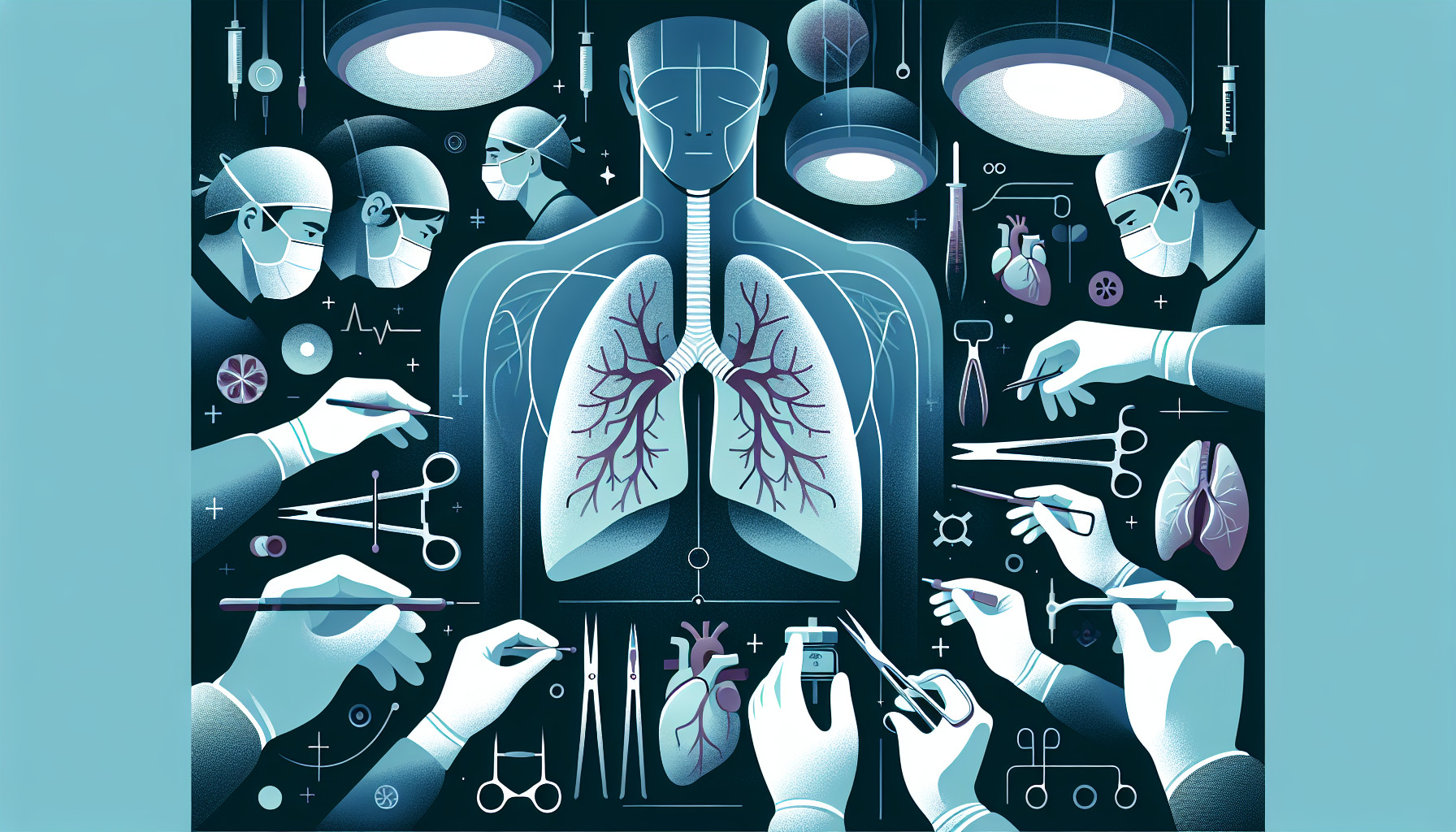Our Summary
This research paper is about a condition called Baseline lung allograft dysfunction (BLAD), which is essentially when a transplanted lung doesn’t function as well as it should. This condition is known to occur after a double lung transplant and can lead to a high risk of death. However, it’s less understood in cases of single lung transplants.
To learn more, the researchers looked back at the medical records of single lung transplant patients treated at LMU Munich between 2010 and 2018. They defined BLAD in these patients as failing to reach a certain level of lung function in two tests taken more than three weeks apart.
They found that 43% of the 141 patients they looked at met the criteria for BLAD. These patients also had a lower survival rate. When they looked for factors that might predict BLAD, they found that patients with a certain type of lung disease who had overly inflated lungs before the transplant were more likely to develop BLAD. They also found that if the donated lung was not a good size match for the recipient, the recipient was more likely to develop BLAD, regardless of their type of lung disease.
The researchers concluded that BLAD is just as important to monitor for in single lung transplant patients as it is in double lung transplant patients. They also noted that the risk factors for BLAD can vary depending on the type of lung disease a patient has. Understanding these factors can help in developing strategies to prevent BLAD.
FAQs
- What is Baseline Lung Allograft Dysfunction (BLAD) in the context of lung transplants?
- What are the potential risk factors for BLAD in single lung transplant recipients?
- How does Baseline Lung Allograft Dysfunction impact survival rates for single lung transplant recipients?
Doctor’s Tip
A doctor might advise a patient who has undergone a lung transplant to diligently follow their post-transplant care plan, including taking medications as prescribed, attending follow-up appointments, and participating in pulmonary rehabilitation. They might also suggest avoiding exposure to tobacco smoke, air pollution, and other respiratory irritants to help protect the new lung. Additionally, staying physically active and maintaining a healthy diet can help support overall lung function and recovery after transplant.
Suitable For
Patients who are typically recommended for lung transplant are those with end-stage lung disease who have failed other forms of treatment and have a limited life expectancy without transplantation. These patients may have conditions such as cystic fibrosis, chronic obstructive pulmonary disease (COPD), idiopathic pulmonary fibrosis, pulmonary hypertension, or other severe lung diseases. Patients with baseline lung allograft dysfunction (BLAD) after transplantation may also be recommended for lung transplant, as this condition is associated with a high risk of mortality. Risk factors for BLAD in single lung transplant recipients may include native lung hyperinflation in obstructive disease, and donor/recipient lung size mismatch in both obstructive and restrictive lung diseases. Pulmonary function testing at 3 months after lung transplantation may also help predict normal baseline lung function in single lung transplant recipients with obstructive lung disease.
Timeline
Before lung transplant:
- Evaluation and assessment by a transplant team to determine eligibility for a lung transplant.
- Placement on the transplant waiting list.
- Waiting for a suitable donor organ to become available.
After lung transplant:
- Surgery to receive the new lung(s).
- Recovery in the hospital, which may include monitoring for complications and learning how to care for the new lung(s).
- Follow-up visits with the transplant team for monitoring and adjustments to medications.
- Rehabilitation to regain strength and lung function.
- Potential complications and adjustments to medications to prevent rejection.
- Long-term monitoring and management of the new lung(s) to ensure proper function and prevent complications.
What to Ask Your Doctor
What is baseline lung allograft dysfunction (BLAD) and how does it impact allograft survival in single lung transplant (SLTX) recipients?
What are the criteria for defining BLAD in SLTX recipients, and how is it different from BLAD in double lung transplant (DLTX) recipients?
What are the potential risk factors for developing BLAD in SLTX recipients, and how can these be identified and monitored?
How does native lung hyperinflation and donor/recipient lung size mismatch contribute to the development of BLAD in SLTX recipients with obstructive and restrictive lung diseases?
How can pulmonary function testing at 3 months post-transplantation be used to predict normal baseline lung function in SLTX recipients with obstructive lung disease?
What strategies can be implemented to prevent or mitigate the development of BLAD in SLTX recipients, based on the identified risk factors and predictors?
What is the prognosis for SLTX recipients who develop BLAD, and what are the potential treatment options available to improve outcomes in these patients?
Reference
Authors: Gerckens M, Mümmler C, Richard A, Strodel J, Mertsch P, Milger K, Veit T, Gade N, Yildirim AÖ, Schneider C, Kauke T, Michel S, Irlbeck M, Behr J, Kneidinger N. Journal: Transplantation. 2025 Apr 1;109(4):e213-e221. doi: 10.1097/TP.0000000000005189. Epub 2024 Sep 9. PMID: 39250332
